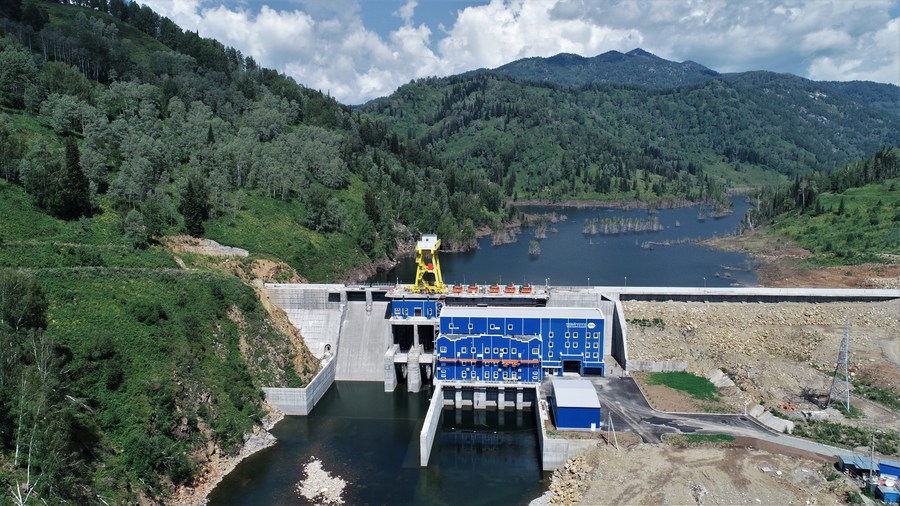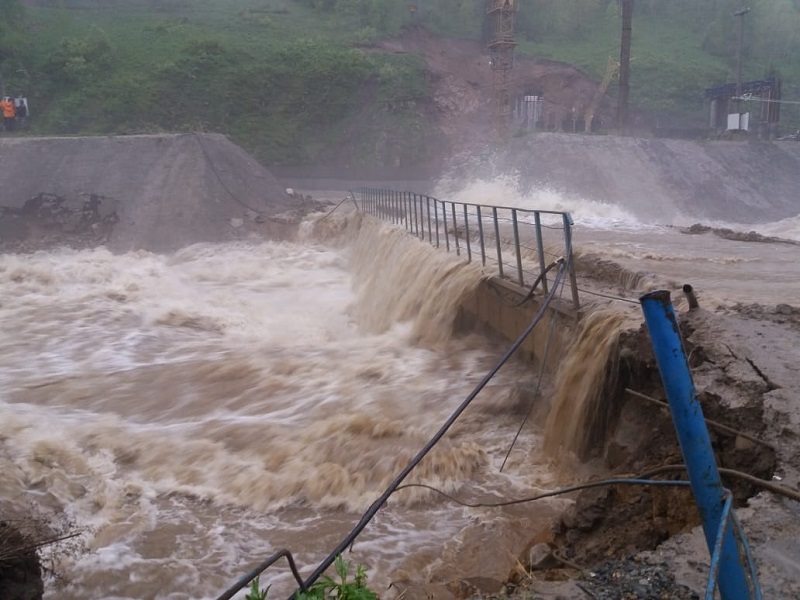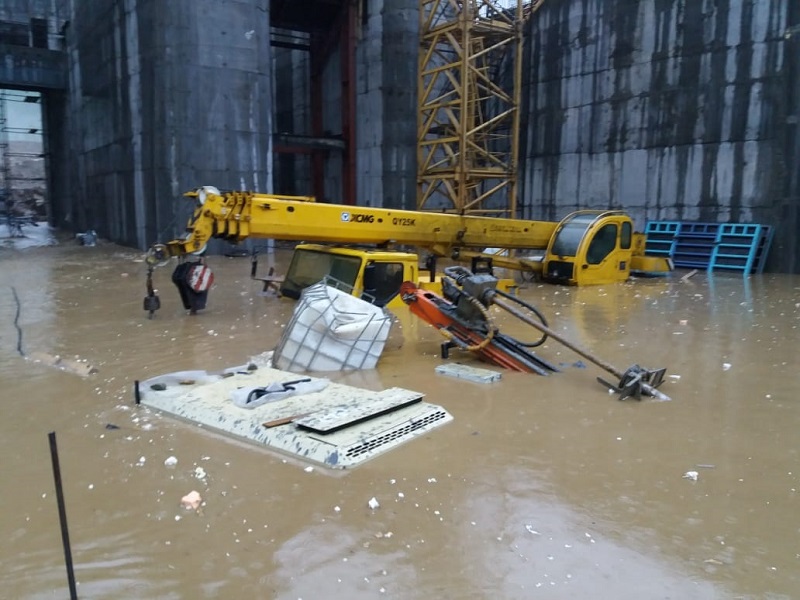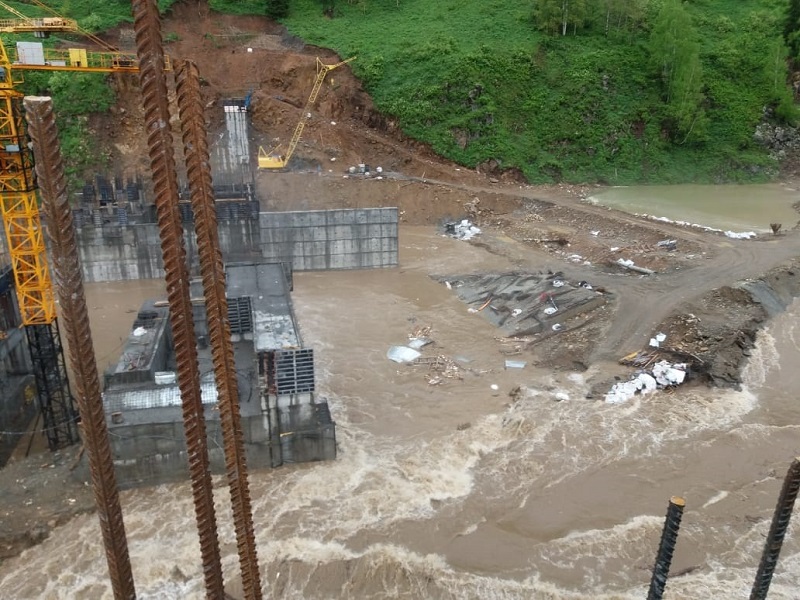
Turgusun hydropower plant
Status: operating (as of October 2022)

General information
Name: Construction of Turgusun hydropower plant(*)
Chinese name: 图尔古松水电站
Location: Turgusun River, Altai District, East Kazakhstan Oblast (49°56’56.0″N 84°03’01.0″E)
Project type: electric power industry
Owner: Turgusun-1 LLP(*)
Main Contractor(s): China International Water & Electric Corporation (CWE)(*)
Sources of financing: National Management Holding Baiterek JSC through Development Bank of Kazakhstan JSC and its subsidiaries (KZT14.6 billion)(*)
Project Cost: $50 mln(*)
Project Status: operating (as of October 2022)



Project Overview
All equipment at the HPP is made in China
The 24.9 MW Turgusun hydropower plant (HPP) was commissioned in August 2021. The station is located on the Turgusun River in the mountains of the Altai District of East Kazakhstan Oblast about 30 km from the town of Altai (formerly Zyryanovsk). The average annual electricity generation at the plant is 79.8 million kWh, which according to CWE’s representative in Kazakhstan can reduce carbon dioxide emissions by about 72,000 tons per year. The plant should help reduce the power shortage in the Altai region by almost half. This HPP is the first Kazakh-Chinese hydropower project since the launch of the Belt and Road Initiative. China Water and Energy International Corporation (CWE, a subsidiary of China Three Gorges Corporation) participated in the construction of the HPP, with which a contract was signed in 2014(*).
It took approximately 7 years to design and build the plant. Due to the coronavirus pandemic, the construction of the HPP was frozen for almost a year, as Chinese specialists could not arrive for installation and commissioning works(*). According to the information of the management of Turgusun-1 LLP, the costs of construction of the plant turned out to be enormous, due to changes in the design and estimate documentation, increase in the volume of construction and rise in the cost of construction materials. The design, as well as the working documentation and author’s supervision were carried out by the Chinese party. All the equipment at the HPP was manufactured in China and cost 4 billion tenge(*). According to the management of the plant, it is the most modern in terms of equipment and there are no analogues of such a HPP not only in Kazakhstan, but also in the entire post-Soviet space. In the coming years, two more HPPs are planned to be built on the Turgusun River with a capacity of 45 MW and 100 MW(*)

Project impact

Air environment

Aquatic Environment

Land resources

Plant and wildlife

Production and consumption waste

Socio-economic environment
Sources: Conclusion of the State Environmental Expert Review for the project “Construction of Turgusun HPP on the Turgusun River in Zyryanovsky District of East Kazakhstan Oblast”, 2016. Conclusion of the state expertise on the project “Construction of Turgusun HPP on the Turgusun River in Zyryanovsky district of East Kazakhstan region. Correction”, 2019.



The Turgusun HPP is a good example of insufficient planning
According to the management of Turgusun-1 LLP, the plant meets all modern technical and environmental requirements, floods a minimum of territory and does not harm the river ecosystem(*). The Chinese side also believes that the project has a positive impact on the local environment(*). The project is presented as one of the important achievements of the Belt and Road Initiative in Kazakhstan, as well as a contribution to the development of “green” energy and the realization of the climate agenda in the country(*).
According to Evgeny Simonov, International Coordinator of the Rivers Without Borders Coalition, the project has a number of significant environmental and socio-economic drawbacks.
1. The Turgusun hydropower plant is a good example of insufficient planning. As a result, construction of such a tiny plant was delayed for a long seven years, which turned out to be twice as long as planned. Accordingly, the cost of construction increased by at least 35%. And that’s without taking into account financing costs, which add another 35% to the conservative estimate(*). The unplanned growth of construction costs is also recognized by the management of Turgusun-1 LLP(*). The cost of electricity generation at the HPP is much higher compared to other renewable energy sources, as it includes the costs associated with dam construction and equipment procurement. From 2010 to 2018, the cost of a “water” kilowatt in the world increased by 25% on average, while the cost of a “wind” kilowatt decreased by 25% and the cost of a “solar” kilowatt by 76%(*). In addition, the Turgusun hydropower plant fell victim to the coronavirus pandemic like many other frozen projects of the Belt and Road Initiative from Indonesia to Ecuador due to lockdowns in these countries and the use of Chinese labor. This has become a kind of hallmark of the Belt and Road Initiative, with the creation of infrastructure facilities with the help of capital and Chinese guest workers becoming the Achilles’ heel of such projects(*).
As a result of ignoring local climatic peculiarities, the construction site of the Turgusun HPP was severely damaged by floods due to heavy rainfall in 2018 and 2019
2. The lack of climate change adaptation measures in the planning of the plant is another important negative point.
One of the first hydropower plants in Kazakhstan was built exactly on the Turgusun River by French engineers in March 1902. On the same place where the present hydropower plant is located. But in May of the same year, when heavy rains hit the region, a powerful flood destroyed the dam of the power plant. Turgusun is famous for its stroppy temper(*). Turkic word “Turgusun” means “mad bull”, which is quite understandable, because the river has the largest in the East Kazakhstan region height difference from the source to the mouth, so in spring the water rushes down with great speed. This crazy energy led to the disaster of 1902. Later, in the 1930s, Soviet engineers built a hydropower plant, but the dam was put not on the Turgusun River itself, but on the diversion channel. And for more than 20 years this plant reliably supplied electricity to the Zyryanovsky district(*).
However, the Chinese engineers planning the project were either unaware of these facts or ignored them. This is not surprising, as CWE was responsible for the construction of the 300 MW Moynak HPP on the Charyn River in Almaty Oblast prior to this project, which had a number of negative environmental consequences. In particular, the natural flood regime in the Charyn National Park was disrupted, causing significant degradation of the relict floodplain forests along the Charyn River in a matter of years(*). As a result of ignoring local climatic peculiarities, the construction site of the Turgusun HPP was severely damaged by floods due to heavy rainfall in 2018 and 2019(*). In 2018, during a flood that lasted about 3 months, the HPP construction pit was flooded 8 times, causing a damage of 100 million tenge(*). Given the more abrupt and frequent occurrence of weather anomalies in the course of climate change, hydropower plants around the world have become more dangerous and less reliable facilities, as their stable operation is hampered by both floods and droughts(*).
In the expertise itself, there is not a word about the fact that taimen is a red-listed species in Kazakhstan, as well as listed in the IUCN International Red Book
3. Attempts in local and Chinese media to present the Turgusun HPP project as a contribution to the development of “green” energy in the country, which has a useful environmental effect, do not correspond to reality.
None of the statements of Turgusun-1 LLP and state structures, publications in mass media speak about preservation of fish migration in the Turgusun River, as well as the video from the project does not show fish passage in the HPP dam(*). Although both expert review reports on the project (2016, 2019) note that the main impact will be on taimen and planned construction of a fish passage in the dam body. The taimen is the largest salmonid fish in the world, is listed in the Red Book of Kazakhstan and lives exclusively in these areas of the country(*). By the way, there is not a word in the expertise about the fact that taimen is a red-listed species in Kazakhstan, as well as listed in the IUCN International Red Book. The stocking of taimen fry in the Bukhtarma River promised in the project is also not supported by a description of specific measures and probably did not take place. Taimen is a very difficult species to reproduce artificially. There is also no information on an assessment of the impact of the dam on the ichthyofauna of the West Altai State Reserve upstream of the river, although the dam may have affected the migration of fish there(*). There is also no information on specific environmental protection measures to mitigate the adverse effects of the project. Such as rationing of environmental flows, i.e. water releases, which the plant management is obliged to ensure in order to preserve the downstream ecosystem of the Turgusun River.
As for claims of “reduced greenhouse gas emissions” as a result of the hydropower plant, photos and videos from the project show many dying trees left in the flood zone(*). This means that woody vegetation was not even bothered to be removed from the bottom of the future reservoir. Even though it was a requirement of the 2019 appraisal. Now it will rot there and release methane, the greenhouse gas with the most significant impact on climate change.
In general, the creation of dammed hydropower plants on rivers can in no way contribute to the reduction of greenhouse gas emissions. Even for relatively small HPPs, there is a long construction phase, when greenhouse gases are actively emitted, and then, in the first decades of the reservoir’s existence, rotting organics at its bottom actively produce methane. Therefore, all statements about “emission reduction” are more like fantasies of officials and owners of HPPs than the real effect of their creation, supported by fraudulent “carbon balance calculations” stretched over 70-100 years – the service life of an average dam. Compared to HPPs, it takes 3-5 times less time to build WPPs and SESs, and the release of greenhouse gases after construction is minimal(*).
*Photographs taken from RUSSIAN.NEWS.CN and Курсив


